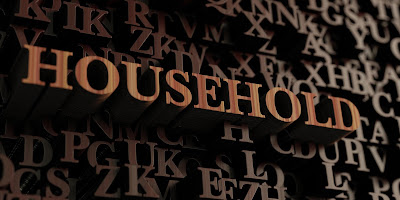The semi-detached house with its bay windows and net curtains has long been ridiculed as an emblem of safe, lacklustre and desperately uncool suburban life. These are the homes that we would associate with sitcoms like George & Mildred, Terry and June, Hyacinth Bucket from Keeping up Appearances and the curmudgeon that is Victor Meldrew from One Foot in the Grave. While we were laughing watching them, their equivalents locally are having the last laugh, having witnessed the highest price growth of any property type in Falmouth. In the last 20 years, their value has increased by a staggering 462%! I Just don’t believe it ! (sorry Victor, I couldn’t resist it)
The semi can now laugh in the face of its posher detached counterpart,
which saw a rise of only 290% in the same 20-year period. Looking at smaller
properties, flats/apartments only rose 178%, whilst terraced houses did much better
at 392% (although they were starting from a lower base and demand from buy to
let landlords has had a big part in driving the values on that type of house).
In 1996 the average value of a Falmouth semi stood
at £54,400,
today it stands at £305,800!
Semi-detached
houses were built in their hundreds of thousands by the Victorians and
Edwardians between the wars and through to the present day. Interestingly in
the late 19th Century and early 20th Century – they often
weren’t referred to as semi-detached – but as villas!
Over one in four houses in Falmouth
is a semi-detached house
(I just don't believe it!)
Falmouth is full of them! Indeed every other house in Dracaeana Avenue and the roads off are semis, the same is true of Boslowick, Swans Reach and Longfield. In fact there are 2,767 semi-detached properties in Falmouth and they
represent 28.05% of all the households!
The most overlooked aspect of popularity for the older semis is the
garden. The front garden, designed to separate the house from the world, and the
back garden designed for private relaxation. Both give privacy and afford an opportunity to improve, extend, build over and glaze with a conservatory for all year round living.
Their versatility lends to family and in many areas student letting too. It is little wonder that as I write this, two landlords I know, have put firm offers in on semis in Falmouth. Very wise fellows they are too! I would say this because I'm off home to Trescobeas to live the semi lifestyle myself.
Notes
Percentage increases based on Land Registry figures for Falmouth now vs 1996
Average Values of Semi are also based on Land Registry data for Falmouth



